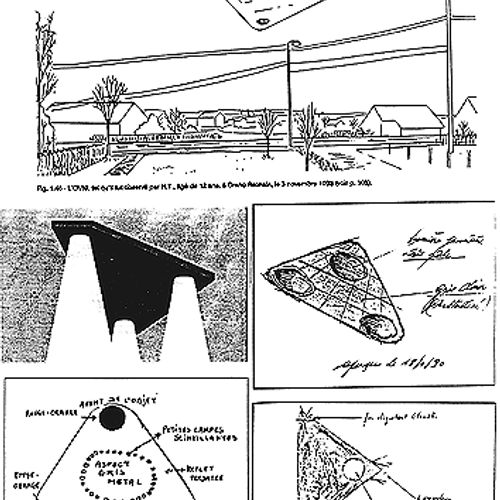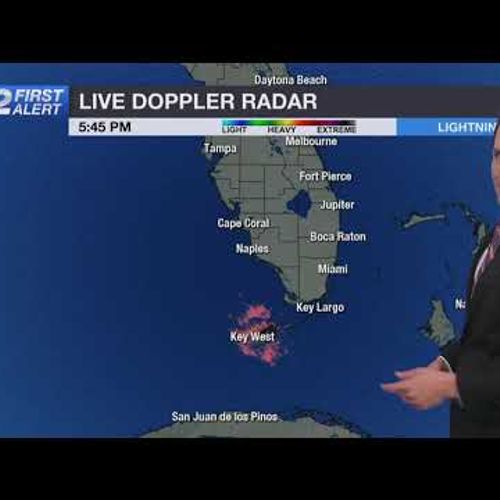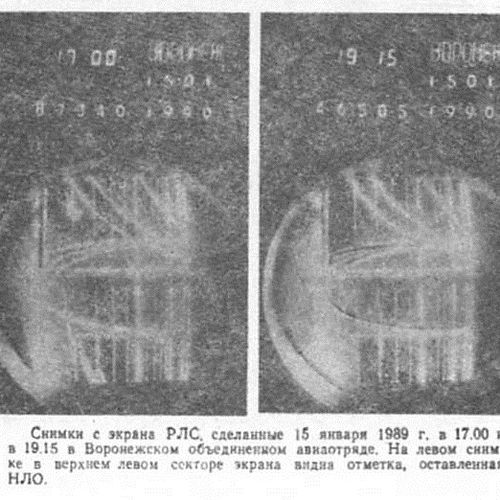
| Added | Sun, 01/10/2017 |
| Sources | |
| Феномены | |
| Version type |
Radar station (radar), radar (eng. radar from radio detection and ranging — radio detection and range measurement) is a technical system designed to detect air, sea and land objects, as well as to determine their range, speed and geometric parameters. Uses a radar method based on the emission of radio waves and the registration of their reflections from objects.
One of the first devices designed for radar of aerial objects was demonstrated on February 26, 1935 by a Scottish physicist Robert Watson-Watt, who had received the first patent for the invention of such a system about a year earlier.
In the second half of the 1930s, the first industrial radar designs appeared in the UK. They were bulky, and they could only be placed on land or on large ships. In 1937, a prototype of a compact radar suitable for placement on an airplane was tested.
On January 3, 1934, an experiment was successfully conducted in the USSR to detect an aircraft using the radar method.
Radar is based on the following physical phenomena:
- Radio waves are scattered by electrical inhomogeneities encountered in the path of their propagation (objects with other electrical properties other than those of the propagation medium). In this case, the reflected wave, as well as the actual radiation of the target, allows you to detect the target.
- At large distances from the radiation source, it can be assumed that radio waves propagate in a straight line and at a constant speed, so that it is possible to measure the range and angular coordinates of the target (Deviations from these rules, valid only in the first approximation, are studied by a special branch of radio engineering — the propagation of radio waves. In radar, these deviations lead to measurement errors).
- The frequency of the received signal differs from the frequency of the emitted vibrations when the receiving and radiation points are mutually displaced (Doppler effect), which makes it possible to measure the radial velocities of the target relative to the radar.
- Passive radar uses the radiation of electromagnetic waves by observed objects, it can be thermal radiation peculiar to all objects, active radiation created by the technical means of the object, or side radiation created by any objects with working electrical devices.
Under certain conditions, "ghost targets" can be seen on the radar. The study of such goals and their causes began during the Second World War.
The reasons for the appearance of false goals may be:
Natural radio waves or "radar mirage". Over the sea (less often over land) Under certain meteorological conditions, the air acquires the ability to focus radio waves within a natural channel invisible to the eye, which is called a natural waveguide. Radio waves are captured by a waveguide and propagate in it over fantastic distances. This phenomenon is called superrefraction. The height of an atmospheric waveguide is usually several tens of meters and rarely exceeds 150-180 meters.
Thanks to atmospheric waveguides, the radar can "see" the target far beyond the radio horizon (the radio horizon lies about 15% below the geometric horizon due to the refraction of radio waves in the atmosphere). Under normal conditions, the radar does not "see" objects located below the radio horizon.
Reflections from birds and insects. The bird, both single and as part of a flock, is visible on the radar. Three birds per square kilometer of the inspected area are enough to "score" the indicator screen. Radar echoes from a flock of cranes or geese can mask the signal reflected from the largest jet. During the autumn and spring migrations, birds can completely disrupt the operation of radars located on the migration route. During this period, many spots appear on the indicator screens, which move like falling leaves.
Some birds can fly at speeds up to 90 km/h (and even faster with a tailwind).
The signal reflected from a flock of insects is also visible on the radar. It can give a mark on the screen even with a very small concentration of midges (one insect per 10,000 cubic meters).
Reflection from an inhomogeneous atmosphere. Inhomogeneities are not only dust particles suspended in the atmosphere, but mainly chaotically small thickenings and rarefactions of air (density fluctuations), which lead to a change in the refractive index. Radio waves are scattered in such inhomogeneities of the atmosphere, and some of them are captured by the radar antenna. Their power is sometimes enough to cause the indicator to light up on the screen.
Reflections from ionized air. Some of the radar "ghosts" owe their origin to the ionization of the air. This was noticed during the Second World War. Many echoes appeared on radar screens as the Earth passed through meteor showers. Even the smallest speck of dust moving in the atmosphere at cosmic speed (meteors invade near-Earth space at speeds from 11 to 72 km/s), burning, leaves behind an ionized layer of air. Reflections from ionized clouds formed during auroras and ionized traces from lightning are also visible on radar screens.There is also an example of an ionized clot, which can be seen not only on the radar screen, but also visually. In some stony rocks, a piezoelectric effect occurs due to mechanical stresses. The resulting electric field can ionize the air above the rock. The ionized area moves in the atmosphere, glows and sometimes takes the form characteristic of many unidentified flying objects (UFOs). Such phenomena occur in mountainous areas, in areas where there are faults in the Earth's crust and cavities in rocks, i.e. in places of concentration of mechanical stresses. Interestingly, insects in ionized air also begin to glow – emit a bluish light. The reason for the generation of light is in the chemical reactions of impurities that are constantly in the air (ozone, nitrogen oxide, organic substances, ions, free atoms and other chemically active substances).
Electronic suppression technologies (RAP). An example from the book "Mirage Men: An Adventure into Paranoia, Espionage, Psychological Warfare, and UFOs":
The most primitive kind of RAP, which was called "Window", or BEFORE, was actually not electronic at all. The British were the first to use it during the devastating raid on Hamburg in July 1943. Crew members dropped strips of aluminum tape from airplanes. Clouds of metal scraps, each of which was half the wavelength of the German Wurzburg radars (53-54 centimeters), overloaded enemy radars with false reflected signals.
Artificially created goals. Such goals are created, in particular, for testing the radar system as a whole. The system uses all types of radar signals, simulating reflected radar signals with arbitrary delay, Doppler shift and effective scattering area (ESR). In this way, both single targets and groups can be created.
An example from the book "Mirage Men: An Adventure into Paranoia, Espionage, Psychological Warfare, and UFOs":
Naval scientists suspected that some of the ghosts arose from the accumulation of powerful ship radars, and realized that the ability to create phantom reflections on command would be an extremely useful tool for misleading the enemy.
An article in the journal Aviation Research and Development in March 1957 discussed how much ghost-making technology has been improved and how it is now being put at civilian disposal:
The new system, which simulates mobile targets on radars and generates up to six separate targets on any standard radar indicator, has been developed ... to train radar operators ... as well as to conduct crew training on early detection of approaching aircraft during flight ... The location, paths and speed of movement of targets can ... reproduce... realistic flight courses… It is easy to simulate speeds of up to 10 thousand knots [about 18,500 kilometers per hour]... The target can turn left or right… An adjustment is available for each target to provide a realistic view of its scale.
Davidson found in this description a lot in common with the movement of objects seen over Washington in July 1952. And he also knew who had such technology in their hands shortly before the UFO flyby.:
Since 1951, the CIA has provoked or facilitated saucer sightings to solve its own problems. Through clever psychological manipulations, a series of "normal" events were presented as convincing evidence of the existence of extraterrestrial UFOs… [including] the use of RAP by the military, in secret and without the knowledge of the radar operators involved in the surveillance cases.
Related facts
Related news
Related articles
Log in or register to post comments




